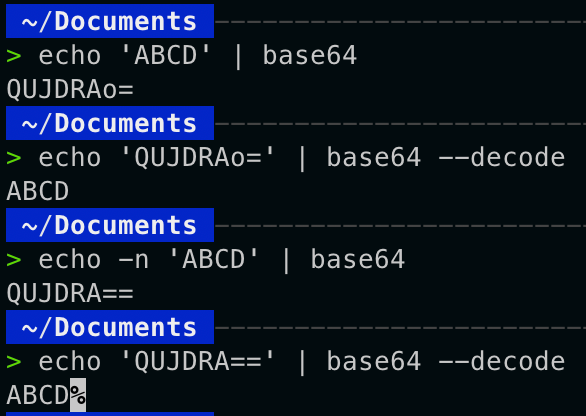Understanding Base64 Encoding: A Comprehensive Overview
Written on
Chapter 1: Introduction to Base64 Encoding
Base64 is a technique used to convert binary data into ASCII text. Initially referred to as "printable encoding," it received its official name, "Base64," in June 1992 through RFC 1341. The term "Base64" originates from the use of 64 distinct characters for encoding, distinguishing it from other encoding methods like Base85. When exploring other algorithms such as Base16, Base32, Base36, Base58, Base91, or Base122, it’s clear that they share a similar concept, differing only in the number of characters utilized. However, Base64 stands out as the most widely adopted encoding scheme due to its extensive application across numerous platforms and services.
Step-by-Step Encoding Process
Let's take the string "ABCD" as an example. After applying Base64 encoding, it transforms into "QUJDRA==". Here’s how the process unfolds:
Step 1: Binary Data Representation
First, we convert "ABCD" into its binary form:
- A = 01000001
- B = 01000010
- C = 01000011
- D = 01000100
Thus, the full binary representation of "ABCD" is:
01000001 01000010 01000011 01000100
Step 2: Convert to 6-bit Blocks
Next, we organize the binary data into 6-bit segments:
010000 010100 001001 000011 010001 00
Step 3: Mapping to Base64 Characters
Now, we map each 6-bit block to its corresponding Base64 character:
- 010000 => Q
- 010100 => U
- 001001 => J
- 000011 => D
- 010001 => R
- 00 => A (adding four zeros for a complete 6-bit block)
It’s important to note that if two bits remain after segmenting into 6-bit blocks, we append two "=" characters; if four bits remain, we add one "=" character.
Step 4: Result
Consequently, the Base64 encoded version of "ABCD" is:
QUJDRA==
Decoding Process
Reversing the Base64 encoding is done through decoding, which involves translating from the Base64 character set back into binary data and then reconstructing the original data format.
Validation
To validate the encoding and decoding processes, open your terminal and use the following commands:
# Encode a string
echo -n 'Text to Encode' | base64
# Decode a string
echo 'Encoded Text' | base64 --decode

Note: The -n option prevents the addition of a newline character, which is typically appended by echo. Omitting this option may lead to discrepancies in the output, as an extra newline character would modify the encoding result.
Chapter 2: Conclusion and Insights
This article provided a thorough examination of Base64 encoding. It's essential to recognize that Base64 is not a security measure; rather, it serves to ensure data compatibility and standardization across various platforms, protecting the integrity of data during transmission. We hope this exploration proves to be enlightening, and be sure to follow TechWithPlum for more insightful technology content.
This video titled "Base64 Encoding/Decoding Explained" offers a detailed overview of the Base64 process, enhancing your understanding of the topic.
In this video, "Understanding Base64: Encoding and Decoding Made Simple," the concepts of Base64 encoding and decoding are broken down for clarity and ease of understanding.